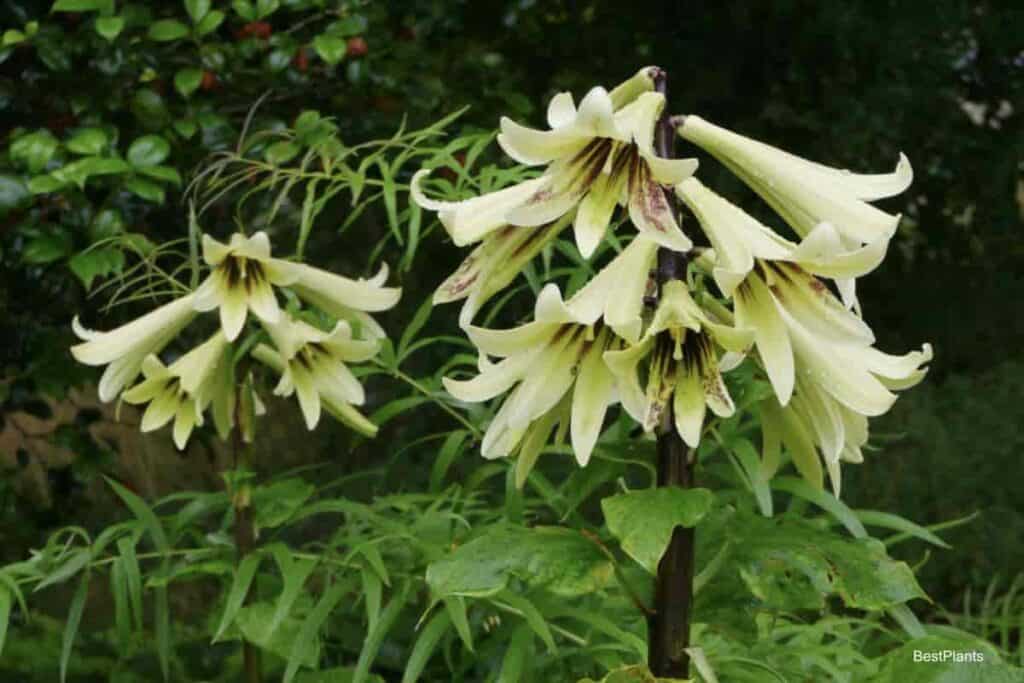Cardiocrinum giganteum is one of the largest and most spectacular of all lilies. It grows to 10’ feet or more and bears as many as 20 to 30 blooms to the stem. The flowers are semi-pendulous trumpets, about 8” inches long, white with purplish-red striping inside.
The large glossy leaves average about 15” inches across. The stems measure up to 9” inches or so in circumference at the base.

Flowering size bulbs are 10” to 12” inches in circumference, and the rapidity with which the plant grows may be judged by the fact that it is in flower before the end of June.
The species was discovered in the Himalayas Mountains around the middle of the 19th century and has since been grown quite extensively in Great Britain and the United States.
Probably the reason why it has not become more popular in the United States is that its requirements, although easy enough to provide in most gardens, are rather special.
Advice From A Specialist
Henry Eckstein of Milwaukie, Oregon, made them his specialty of growing Uinta giganteum bulbs for the commercial trade. He said that this species should be grown in partial shade, where the plant will get no direct sunlight between about 11 a.m. and 3 p.m.
It requires well-drained soil, mixed with plenty of peat moss and well-rotted cow manure or compost, though if manure or compost is not available, bonemeal or fishmeal may be substituted. Commercial fertilizer should be avoided.
The bulbs should be planted in the fall while dormant, and the top of the bulb should be covered with no more than one inch of soil. In cold regions, heavy mulch is advisable over winter.
After Planting
After the plant is planted in the spring, a top dressing of well-rotted cow manure should be applied. Do so if you want the plant to grow to its full height. Otherwise, the stem will only grow to about 6’ feet tall which may be more desirable in some areas.
These lilies should have one good soaking a week. If there is no rain or rain is rare, they should be thoroughly watered whenever necessary. There should be no hoeing near the bulb. All weed growth should be pulled by hand.
Mr. Eckstein said that Cardiocrinum giganteum did not reach peak performance until the bulb had been established for at least a year. He did not recommend the transplanting of flowering-sized bulbs.
The mother bulb dies after blooming, but it makes plenty of offsets to ensure continuation. It also produces considerable quantities of seed. Mr. Eckstein’s stock consisted of many thousands of bulbs, built up from one bulb purchased in 1940.
A group of these lilies will make a magnificent display in any garden where they are given a suitable location. By moonlight, they are even more beautiful than during the day, and their delightfully spicy, clove-like fragrance on a still summer evening makes them truly unforgettable.
This lily should not, of course, be confused with the Easter lily, Lilium longiflorum giganteum, commonly referred to in the trade as “giganteum” or, for short, as “jigs.”